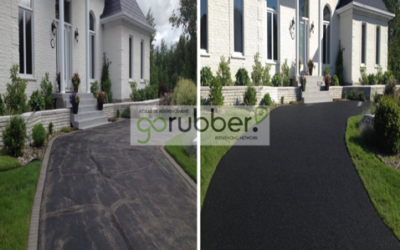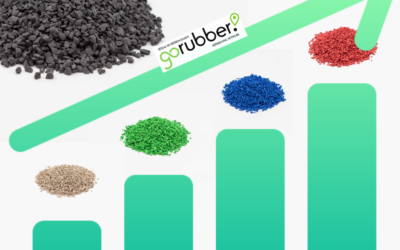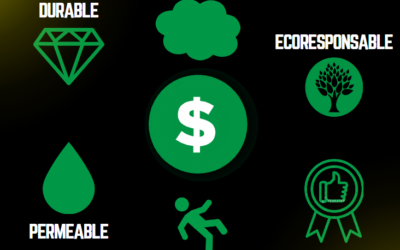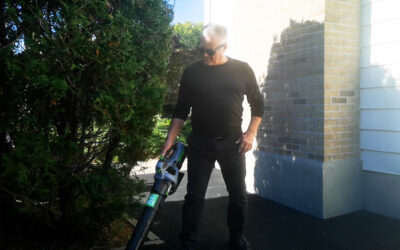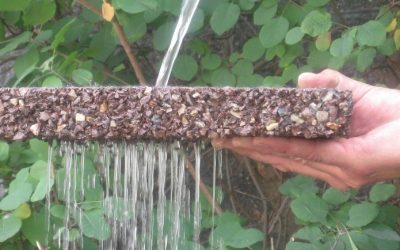Rubber paving vs Paving stones
Do you know the specific needs of your project?
When it comes to choosing between rubber paving and paving stones for your outdoor surface, it’s important to consider the specific needs of your project and the benefits of each option. Rubber paving is an environmentally friendly alternative that uses materials like recycled tires, while paving stones are a traditional option made of natural quarry stone. Both have their own unique benefits and weather resistant specification, and the best choice for your project will depend on your specific needs and preferences.
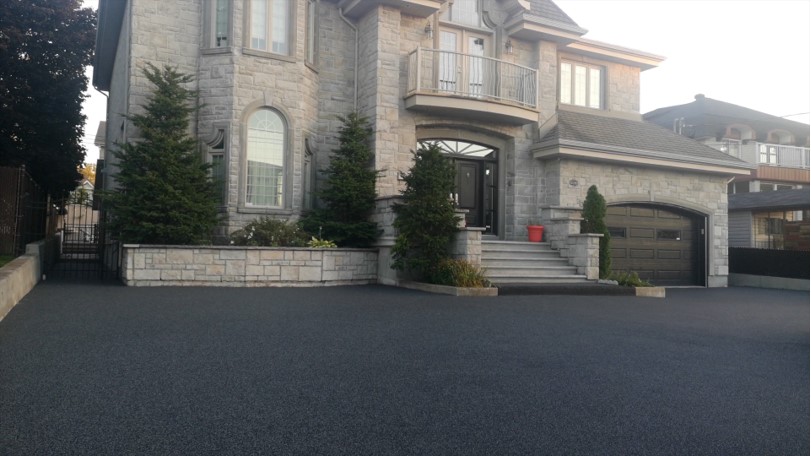
The benefits of rubber paving
Rubber paving is known for its permeability and weather resistance, as it allows water to seep through and into the ground, preventing flooding and erosion, and it can withstand heavy rainfall, frost, and heat. It is also known for its heat transmission property, some rubber materials options are light in color, which can reflect heat and keep the area cool.
The benefits of paving stones
On the other hand, paving stones are known for their traditional and elegant look, they come in a variety of natural colors and patterns, making them well-suited for traditional or classic architectural styles. Paving stones are also known for their durability, resistance to wear and tear, and weather resistance, they can withstand heavy rainfall, frost, and heat. They also have a good heat transmission property, many natural stones are good conductors of heat, they can absorb and dissipate heat, keeping the area cool.
The importance of considering soil permeability
For example, if you’re looking for a surface that’s more permeable and can help prevent flooding and erosion, rubber paving is a good option, as the materials used allow water to seep through and into the ground. This is especially important for projects located in areas prone to heavy rainfall or flash floods.
Some examples of applications for rubber paving
Rubber paving can also be a good choice for specific projects like bike lanes, playgrounds, and other areas where slip-resistance and cushioning are important. According to a study conducted by the Rubber Pavement Association, surfaces made of recycled tires has been found to reduce injuries by up to 50%, especially in playgrounds compared to any other type surfaces.
The cost of rubber paving compared to paving stones
In terms of cost, rubber paving can often be less expensive to install and maintain than paving stones, as the materials used are often less expensive. A study by the Rubber Pavement Association found that rubber paving made of recycled tires can last up to three times longer than traditional asphalt pavements, reducing the need for costly repairs or replacements.
Conclusion: choice according to specific needs
In conclusion, both rubber paving and paving stones have their own unique benefits, weather resistant specification, and heat transmission property, and the best choice for your project will depend on your specific needs and preferences. It’s always recommended to consult with a professional to determine the best option for your project.
Discover the new trendy platform to find a rubber paving installer near you!
Whether you choose rubber paving or paving stones, you can be sure that you’ll have a functional and beautiful outdoor surface that will last for years to come. To facilitate your search in seeking a project quote, we’ve developed a platform that allows you to find the rubber installers in your area.
If you don’t find any installer, send us a quick message and we’ll help you.
Any more questions?
We invite you to read our other Blogs to learn more about poured-in-place rubber installs.


